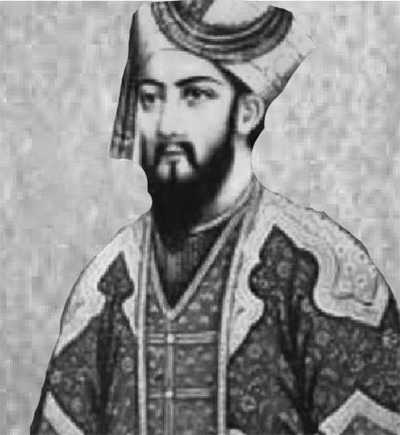Tughlaq, Rasputin, Shiva, Uncle Podger.… It’s interesting how characters from history, mythology and literature keep springing to life in one form or the other every few decades or so. The past some weeks have thrown up instances that remind one of the strongly delineated personae. And, that one name ascribed to the person describes it all, endowing the beneficiary with all the attendant attributes — good, bad or ugly.
Let’s begin with the one who has affected us Indians on a scale that was last, perhaps, seen in the 14th century. I am referring to the post-demonetisation avatar of our PM, Narendra Modi. Modi has been called Mohammed bin Tughlaq, Uncle Podger and the despotic Nadir Shah in this context.
Tughlaq notoriously shifted the capital of his kingdom on a whim from Delhi to Daulatabad. While the logic of having a central place as the capital made sense, the logistics of moving 700 miles away, cost a huge capital. It also cost many lives as he, equally abruptly, reversed the decision. In another revolutionary move that was bold for the time, but foolish, he introduced the concept of token money, called tankas. In this case too, though the concept was perfect, it failed to gain currency and came a cropper as the copper and brass coins, that could be exchanged for fixed amounts of gold and silver, spawned forgeries and fake money. The new currency had had to be withdrawn within a few days. Not surprisingly, Tughlaq was assassinated soon after, though today he is also seen as being ahead of his times. And today, going by the public mood, it seems unlikely that Modi’s gamble would pay off for him.
As for the Uncle Podger analogy, I remember giggling as a schoolgirl while reading the exasperating mess that the protagonist created in the eponymous “Uncle Podger Hangs a Picture”. The Jerome K. Jerome story still never fails to evoke a smile, if not a giggle. And, everybody knows the despotic Nadir Shah, the Shah of Iran who looted and plundered our country around 300 years ago.
While the Tughlaqian drama is being enacted in India, in the far-off South Korea, the Rasputin saga is replaying. The country’s scandal-hit President Park Geun-Hye is facing impeachment. Her confidante Choi Soon-Sil is the cause for the public ire. Choi is dubbed as Rasputin.
Due to her proximity to Park, Choi allegedly elicited more than $60 million in payments from some of South Korea’s top firms, including Samsung. Choi has also been charged with intervening in state affairs and forcing donations for her firms. Choi has known Park since the 1970s when Park’s father Park Chung-Hee was the country’s President and Choi's father Choi Tae-min was his mentor. The family was still grieving the assassination of the then first-lady Yuk Young-soo. Choi at that time claimed that the shamanic leader could channel communication to her dead mother.
So, who was Rasputin? Grigori Yefimovich Rasputin (1869 –1916) was a Russian farmer and mystic. He became the trusted friend of Nicholas II, the last Tsar of Russia. Even as Rasputin was looked upon as as a charlatan and womaniser, he held an influence over the tsar’s family. Rasputin won their trust as he claimed to have treated the heir to the throne, Alexei, who secretly suffered from haemophilia. There were also rumours that he had a relationship with the Russian tsarina, Alexandra. Rasputin was killed in 1916 after several attempts of assassination.
Then, at a literary event in Chandigarh last week, Amish Tripathi, the author of the bestselling Shiva trilogy, made a keen observation. Commenting on the temple in Kolkata dedicated to Amitabh Bachchan, he wondered if the mythical Shiva was actually a famous revered person thousands of years ago, for whom many places of worship were built and not just a myth. He has a point, no? Thus the saga of lives continues, with characters coming to life again and again.
Ever wondered which historical figure describes you?
hkhetal@gmail.com
Unlock Exclusive Insights with The Tribune Premium
Take your experience further with Premium access.
Thought-provoking Opinions, Expert Analysis, In-depth Insights and other Member Only Benefits
Already a Member? Sign In Now










